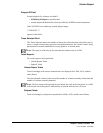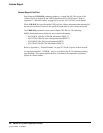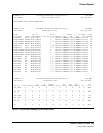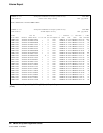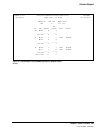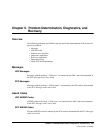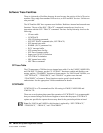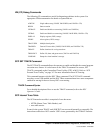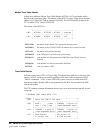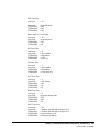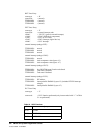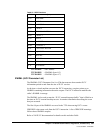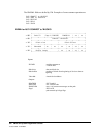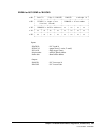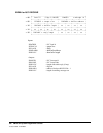
Chapter 5. Problem Determination, Diagnostics, and Recovery 349
1st ed., 6/30/04 - 312579601
VM (CP) Debug Commands
The following CP commands are useful in diagnosing problems in the system. See
appropriate VM documentation for details on syntax and use.
SCP SET TRACE Command
The SET TRACE command allows the operator to enable and disable the control program
execution trace feature. It is also known as the TRACE command. In essence, SET
TRACE corresponds to the Generalized Trace Facility (GTF) in MVS. Refer to “SCP
External Trace Facility” on page 367 for more information about SCP tracing.
This command interacts with the HSC TRace command. The SCP TRACE command
must have event USR enabled, and the HSC TRace command must have some component
enabled for tracing for there to be any HSC event tracing.
TRACE Command Syntax
For a detailed description of how to use the TRACE command, refer to the HSC
Operator’s Guide.
SCP Internal Trace Table
The SCP internal trace table is comprised of two data areas:
• MTTH (Master Trace Table Header), and
• trace table entries.
Events for the system TRACE task (SLKTKT) are not traced internally or externally. The
internal trace table does NOT contain ‘USR’ events generated by the GTRACE function.
ADSTOP Single address stop (VM/SP, VM/SP HPO, and VM/ESA 370)
BEGIN Start execution
CPTRACE Enable and disable event tracing (VM/XA and VM/ESA)
CPTRAP Enable and disable event tracing (VM/SP, VM/SP HPO, VM/ESA 370)
DISPLAY Display registers, PSW, storage
STORE Alter registers, PSW, storage
TRACE/PER Multiple break-points
TRAPRED Format CP trace table (VM/SP, VM/SP HPO, and VM/ESA 370)
TRSAVE Define locations for saving trace data
TRSOURCE Define I/O, data, and guest traces (VM/XA and VM/ESA)
VMDUMP Dump the virtual machine’s storage.



